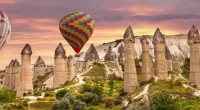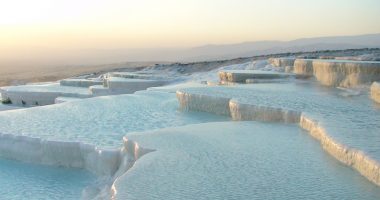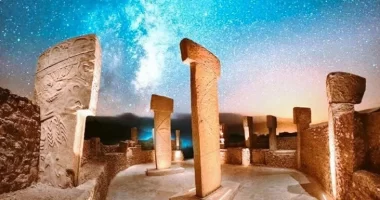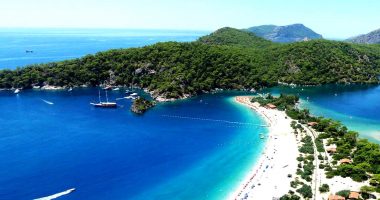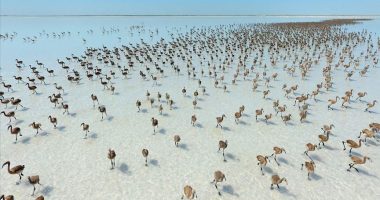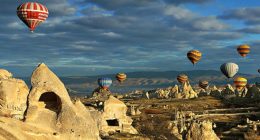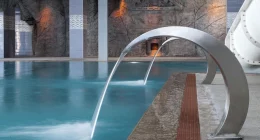Table of Contents
Sumela Monastery, also known as “Virgin Mary” among the people, is located at an altitude of 300 meters. The monastery was founded in the name of Virgin Mary. It is known that the word “Sümela” is derived from the word “melas”. ”Melas” means black. It is thought that the reason for this name is that the depiction of Mary is black or comes from the Montenegro.
You may be interested: Pamukkale
Where is Sumela Monastery?
Sumela Monastery is located in Altındere National Park, 46 km from Trabzon province in northeastern Turkey and approximately 22 km from Maçka district.
History of Sumela Monastery?
According to a legend told among the Black Sea Greeks, two monks named Barnabas of Athens and Sophronios had the same dream. Among the three Panagia icons made by St. Luke, one of Jesus’ disciples, Sumela’s place is known as the place where the icon of Mary holding the baby Jesus in her arms is located. Thereupon, they came to Trabzon by sea, unaware of each other, met there, told each other about the dreams they had seen, and laid the foundation of the first church.

It is thought that the church was built between 365 and 395 AD. It is thought that Emperor Alexios III of Trebizond (1349 – 1390), who is frequently featured in the frescoes in the monastery and given special importance, is the real founder of the monastery. Not much is known about the thousand-year period between the first founding of the church and its transformation into a monastery. However, after the Ottoman conquest in the 14th century, the sultans granted various privileges to the monastery and issued edicts. Therefore, while the region was Islamized, hidden Christian villages surrounded the monastery.
During the Russian occupation, which lasted from 18 April 1916 to 24 February 1918, Sumela monastery, like other monasteries around Maçka, became the headquarters of the Greek militias who wanted to establish an independent Pontus state. After the Christians in the region were sent to Greece with the population exchange, it lost its importance and was abandoned to its fate until it was recently repaired by the Turkish Ministry of Culture. Conservation and restoration work is still ongoing.
Where Does the Name “Sümela” Come From?
It is understood that the name Sumela comes from the word “Black Mountain”, meaning black, dark darkness in the local language of the years when the monastery was built, and the name of the region is Oros Melas. The real name of the monastery is “Panagia Sou Melas”. In the records of the Ottoman Empire, the monastery is mentioned as “Su(o)Mela”.
How Was Sumela Monastery Built?
Sumela is not an enormous complex built in a single period. The method used in the construction of many monasteries was also applied in Sumela, and over time, new parts were built and added to the monastery complex as needed. For this reason, construction and construction works in Sumela followed a course over a period of more than one thousand six hundred years, from the day it was founded to the date it was abandoned in 1923.
The monastery complex and the frescoes decorating its interior were painted in different periods; It is clearly seen in the architecture, painting style, stonemasonry and settlement styles. In the years when it was first established, there was no monastery section or a magnificent façade that resembles a medieval castle that adorns postcards today, and rather the monk cells built in the cavities on the rock surface formed the monastery complex.
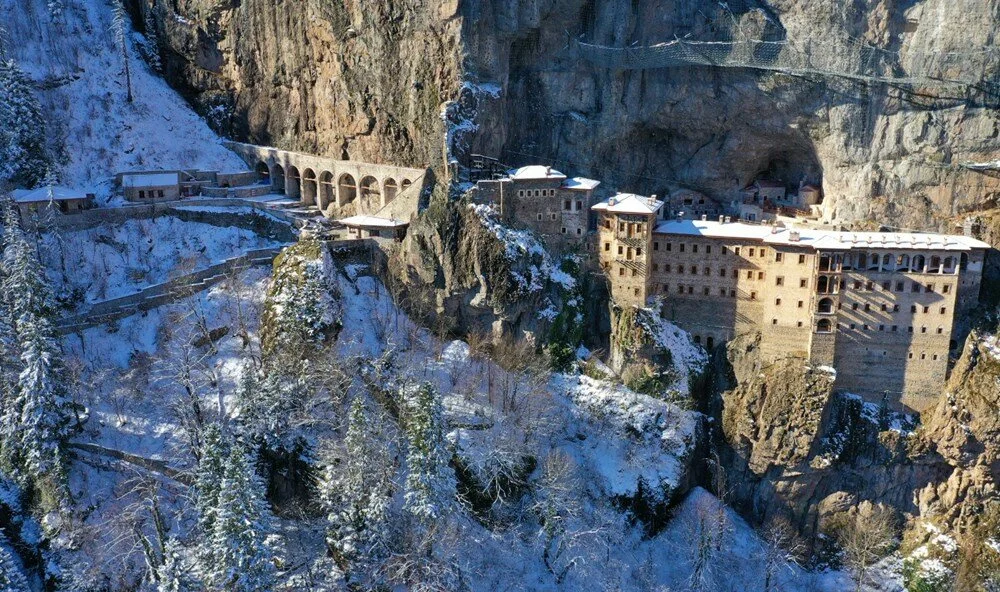
The interior of the Sumela Monastery was built on a large area as the main rock church, a few chapels, a kitchen, student rooms, a guesthouse and a library. At the entrance of the monastery, there is a multi-chambered aqueduct leaning on the hillside, which is known to bring water, but a large part of it has been destroyed today.
The main entrance of the monastery is reached by the long and narrow staircase that provides access to the monastery. Guard rooms are located right next to the entrance gate. After the entrance, a staircase leads down to the inner courtyard. On the left, in front of the cave, there are various monastery buildings that form the basis of the monastery. There is a library on the right. Again, the part with a large balcony surrounding the front of the slope on the right was used as guest rooms and monks’ rooms.
The effects of Turkish art can be seen in the buildings around the courtyard, in the cabinets in the rooms, in the cells and in the hearths. Scenes from the Bible are the main subjects related to the life of Jesus and the Virgin Mary in the frescoes taken from some parts of the Sumela Monastery to be examined and which were severely damaged.
Features of Sumela Monastery?
Sumela Monastery is a huge complex built over time by adding new parts as needed. The frescoes decorating the interior of the monastery were painted in different periods. It is clearly seen in architecture, painting style, stonemasonry and settlement styles. In the first years of its establishment, it did not have a magnificent facade and monastery section that resembles a medieval castle that adorns postcards today. The cave is located to the north of the temple, and the monk cells, chapels and bell tower described above are built inside each other with labyrinth-like spiral connections.
The style of the frescoes and the painting style on the walls of the chapels are very similar to those in the other Maiden’s Monastery in Trabzon. The figure of a stag, probably a symbol of immortality in early Orthodox Christian art, depicted on the outside of the chapel next to the bell tower, can be seen in the main courtyard of the Monastery. In one of the chapels, there is a deer image similar to the one in the Cappadocia Geyikli Church.
Entry is by narrow staircases between chapels and cells, and life in this part of the Monastery complex differs greatly from the luxurious living at the front, with its rooms, magnificent balconies and views, beds and amenities. The part, consisting of many interconnected sections and shapes, was used with a standard of living appropriate to the ascetic life preferred by the monks.

What’s Inside Sumela Monastery?
There are many sections within the Sumela Monastery, such as the library, holy spring, student rooms, guest house, kitchen, chapel and bedrock church. At the same time, the buildings are located on a wide area. There is also a large aqueduct on the hillside through which water flows. These sections reveal the historical and cultural value of the monastery and offer visitors a wide range of experiences.
How to Get to Sumela Monastery?
You can reach Sumela Monastery by either your private vehicle or by public transportation. To reach it with your private vehicle, you must first arrive in Trabzon and then drive 30 km, following the signs for Maçka. After arriving in Maçka, it will be enough to follow the “Sümela Monastery” signs at the exit of the town.
If you want to come by public transportation, you must first take the Maçka minibuses departing from Trabzon to reach Maçka, and then take the minibuses from Maçka to Sumela Monastery.
Note: Click for German dream interpretations
Entrance to Sumela Monastery
The entrance fee to Sumela Monastery, all tracks of which have been opened, has been determined as 125 TL (4.5 €) as of 2023. At the same time, the entrance fee to Altındere National Park, where the monastery is located, is 10 TL (0.30 €). Museum Card is Valid. If you have a Müzekart, you can visit it twice a year; if you have a Müzekart+, you can visit it unlimitedly.
What are the Sumela Monastery Visiting Hours?
Sumela Monastery is open between 09.00-18.00 in summer and 08.00-16.00 in winter.

